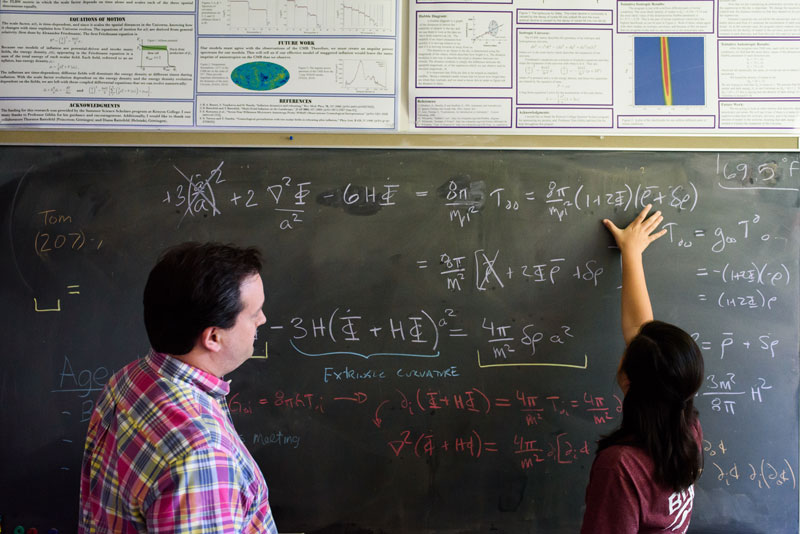As an undergraduate at Kenyon College, Rachel Nguyen—now a doctoral student at the University of Illinois—contributed to research that unlocked a decades-long puzzle about the Big Bang. With support from the Clare Boothe Luce Program, Nguyen worked with her mentor, Associate Professor Tom Giblin, in his lab to test their model which simulated a thermal state of the universe that could have resulted in the Big Bang. Their findings, co-authored by collaborators from MIT and the Netherlands’ Leiden University, were published in Physical Review Letters.
According to Giblin, Nguyen was able to talk “about the project at the same level of sophistication as a tenured MIT professor. It was important for her to know that she’s not just somebody who helps. She’s a central figure in the work.”
Billions of years ago, the Big Bang flung open the universe, evolving it into the intergalactic system we know today, complete with planets, stars and all manners of matter.
But in order for the Big Bang to occur, the universe needed to reach thermal equilibrium, and the process of achieving this equilibrium has mystified scientists for decades — until now.
Rachel Nguyen ’19 and Associate Professor of Physics Tom Giblin teamed with physicists from the Massachusetts Institute of Technology and the Netherlands’ Leiden University on a study that illuminates how the universe reached the thermal state necessary for the Big Bang to occur. Their findings were published in Physical Review Letters, a top physics journal (and a prestigious placement for an undergraduate researcher).
Just prior to the Big Bang, the universe underwent a quick period of rapid expansion, known as cosmic inflation. But at the end of this period of cosmic inflation, the universe lacked particles, and thus was very cold; without particles dancing around, heat could not be produced. Therein was the dilemma: In order for elements of the universe to exist, such as hydrogen and oxygen, the universe needed to be “hot.” To create conditions for a hot universe, energy needed to be transferred from the inflationary field to the creation of particles — a process called “reheating.”
Using software developed at Kenyon, Nguyen, Giblin and their co-authors carefully constructed and tested a model that illustrates how this reheating might have occurred. Using a lattice model, they mapped how the energy of multiple forms of matter might change and interact with gravity in the period after cosmic inflation. Their tested and proven model provides a more complete story of how cosmic inflation occurred — and, crucially, how it ended.





